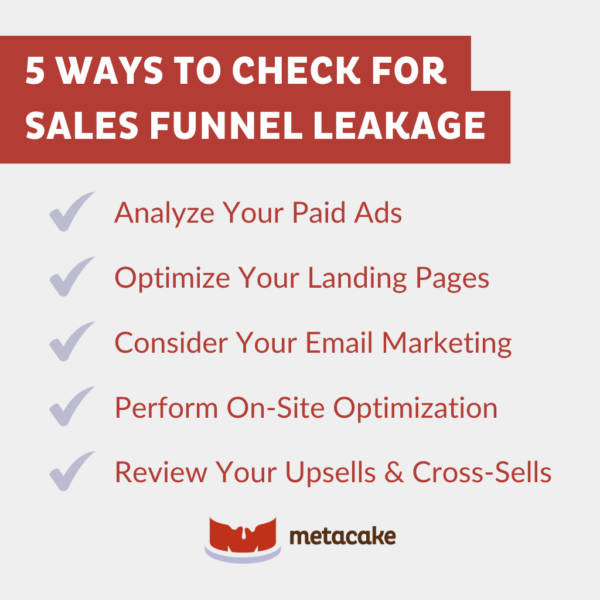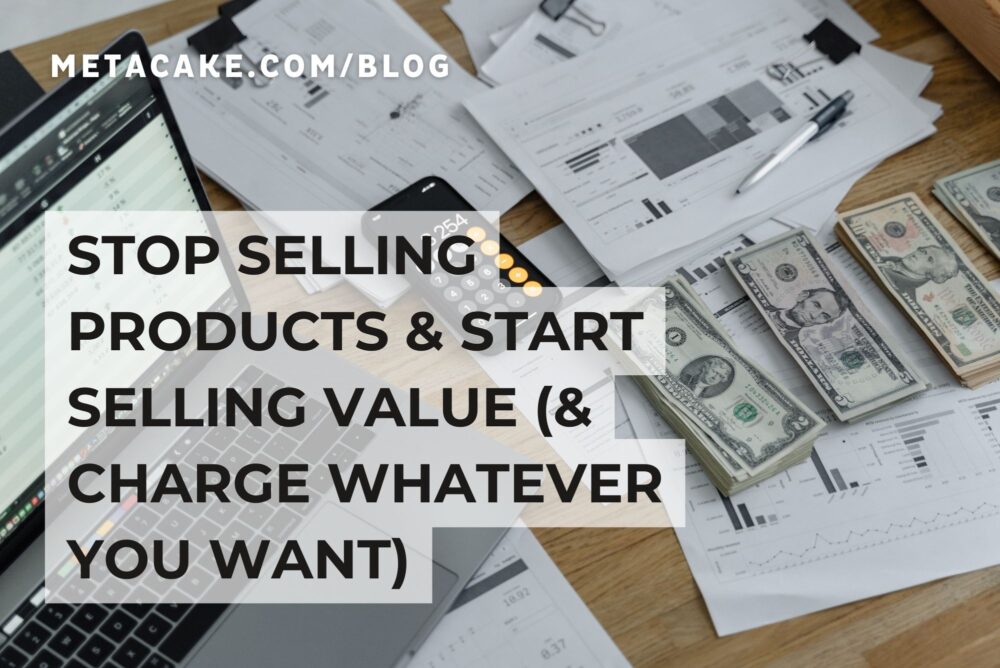
The Top 5 Places to Find Revenue Hiding in Your Ecommerce Conversion Funnel
Is money hiding in your ecommerce business? Is potential revenue leaking away through cracks in your funnel?
In all likelihood, yes. You just have to know where to look.
Successful ecommerce businesses monitor their website’s conversion rate and perform conversion rate optimization to try to improve it. Even a small increase has a huge impact on overall performance.
However, it can be difficult to do correctly. You might test your homepage design, CTA buttons, site navigation, product detail page structure, and more, only to come up empty.
How can you avoid wasting your valuable time on aimless testing and optimizing?
Conversion rate optimization extends beyond your site experience. While investigating and optimizing each step in your on-site funnel is critical, your website is only one piece of the puzzle. Potential revenue can hide anywhere in your sales funnel.
In this post, we’ll discuss the top five places to check for sales funnel leakage so you can start optimizing and uncovering hidden revenue in your business.

5 Places to Check for Sales Funnel Leakage
1) Analyze Your Paid Advertising
Optimizing how you acquire traffic is a huge opportunity. If you’re sending the wrong audience to your site or sending people to your site using misleading information, no amount of on-site conversion rate optimization will move the needle.
Ask Questions About Your Audience
Look at your acquisition strategy across each channel and campaign. Whether you’re running ads on Facebook, Instagram, Google, TikTok, or YouTube, ask yourself these questions:
- Who is coming to your site? What do you know about the audience you’re targeting?
- Why are they coming?
- What have you told them to make them click through to your site?
- Have they been misled in any way or are they coming to your site for what you actually offer?
- Are they primed to buy as much as they can be?
Why ask these questions? Because the quality of traffic you send to your site has a massive influence on your conversion rate. If you’re paying to funnel in hordes of unqualified, low-quality leads, then you’re burning money.
Test Your Ad Campaigns
Once you’ve answered the questions above, consider the following to help improve your ad metrics and send more qualified traffic to your landing pages:
- Ad Copy: Test ad copy that approaches selling in a variety of ways. For example, test logic vs. emotion, long form vs. short form, sales-oriented vs. story-oriented, emojis vs. no emojis, etc.
- Media: Most ads include a piece of media, whether that be a photo, video, or gif. Test media types against one another, keeping in mind what different platform algorithms favor at that moment (for example, Instagram currently prioritizes video content). Within the media format you choose, test other elements, such as captions and text overlays.
- Ad Goals: On the technical side of running ads, test different ad goals. Optimizing for different objectives (such as clicks vs. video views vs. conversions) affects overall ad performance.
- Ad Types and Placements: You may also want to test ad types and placements. Ads running on the Facebook newsfeed may perform better than in the Instagram stories section, or vice versa.We typically find that using Facebook’s automatic placements works best. However, some brands like to tailor their creative to different placement types, in which case you’ll manually select your placements.
2) Optimize Your Landing Pages
The landing pages linked to your ads have a tremendous impact on your conversion rate.
We often see brands sending paid ads traffic to the homepage or a broad collection page. Don’t do that. The chances the visitor will make it to checkout are low.
This is a massive area of sales funnel leakage. The person who clicked on your ad clicked on it for a specific product or purpose. Don’t make them find their way on their own.
To increase your ad dollars’ impact, make sure each ad’s landing page matches the content of the ad — so users see exactly what they expect.
To increase conversions from here, design your landing pages to help visitors purchase as quickly as possible. Test the hero image, the headline, and the information displayed throughout the page.
Sometimes the customer needs more information about your brand or product to make a purchase decision. Other times, too much copy gets distracting. For more information on constructing a landing page that converts like crazy, check out 10 Best Practices for Ecommerce Landing Pages.
3) Consider Your Email Marketing
Did you know that healthy email marketing can contribute 30% of an ecommerce brand’s revenue? Email should be one of the primary ways you connect with your audience and a high priority on your optimization list.
To ferret out any sales funnel leakage in your email marketing strategy, start with these tips:
- Use a great email marketing platform that shares data with your ecommerce store and allows you to split-test every element of your email. We highly recommend Klaviyo.
- A/B test your subject lines for each email. This lets you try each subject line on a small portion of your list to determine which captures the highest open rate. The platform then automatically sends the winning subject line to the remainder of your list.
- A/B test email content. Just as important as subject lines is your email’s actual content. Test different CTAs, types of images, content length, and messaging styles in your emails to find what captures the most clicks.
- Test your automated email sequences. Don’t just set and forget your automated email flows. Improvement over time requires consistent testing and optimization.
- Take advantage of audience segmentation. The more targeted you can get with your audience, the higher your conversion rate will be.You can segment your list by interests or past purchases and email these audiences with products or content they’ll likely relate to. You can also create a segment of unengaged names to exclude from regular promotional emails and run a separate re-engagement campaign to win them back.For more ideas on segmentation, check out 9 Easy Email Segmentation Strategies That Increase Conversions.
4) Perform On-Site Optimization
Okay, you caught us. On-site optimization is still a key component for plugging sales funnel leakage and finding hidden revenue. It’s where conversion rate optimization (CRO) comes into play.
To ensure you’re not just taking stabs in the dark, kick-start your CRO by identifying problem areas first. Don’t just guess what could use some sprucing. Identify the actual points of sales funnel leakage and patch them intentionally.
For example, check your metrics for these problems:
- High bounce rate on your homepage or landing pages
- Low number of visitors clicking “add to cart” from product detail pages
- High drop-off from your cart or checkout page
Solutions might be as simple as adding more interesting product descriptions or making checkout easier to navigate. But you’ll only discover where the leaks are hiding if you look at the data.
Typically, CRO requires a deep dive into your site’s analytics, which informs a plan of action. If you’re looking for a team of experts to help with this, reach out here!
Quick tip: If you see customers abandoning their cart and can’t diagnose why, try a brief survey pop-up asking what’s stopping them from checking out. It’s a simple yet effective way to quickly gather customer feedback.
5) Review Your Upsells and Cross-Sells
Using upsells and cross-sells on your website? These can increase your average order value (AOV), but they can also create friction for a customer on track to check out. In those cases, they can hurt your conversion rate.
Use caution with upsells and cross-sells, and make sure to test the offers and their placements (e.g., a pop-up when they add-to-cart, or at checkout?).
The least distracting time to upsell and cross-sell is post-purchase. Several apps, like AfterSell, allow you to make an offer after the initial conversion takes place. This ensures your upsells and cross-sells don’t tank your conversion rate while retaining the potential for increased AOV.
Patch Sales Funnel Leakage for Great CRO
Your sales funnel extends far beyond the on-site experience. Using the tips above, you’ll be able to look at the customer journey as a whole and identify leaky spots to shore up. As you do, you’ll see your conversion rate improve and — more importantly — your revenue rebound.


